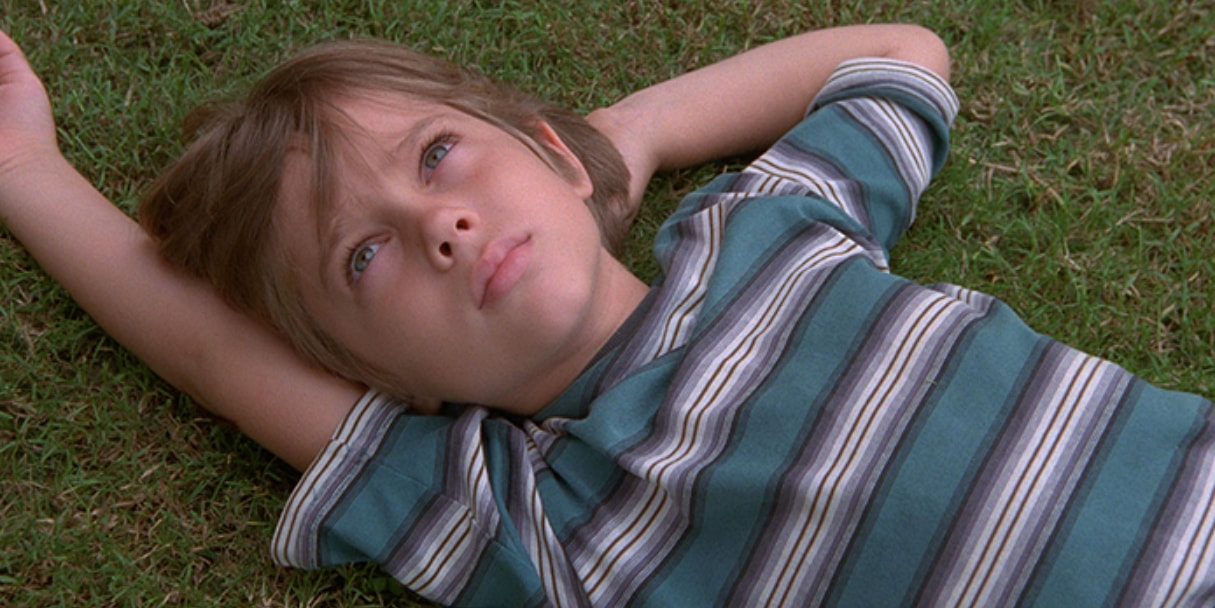Richard Linklater may be the most prestigious filmmaker alive to have a visual style so disarmingly simple. Many of his most acclaimed movies, especially “The Before Trilogy” and “Boyhood,” cultivated an elegant, simplified filmmaking approach that promotes a rare kind of naturalism –– Linklater’s movies can feel improvised despite being rigorously rehearsed, and he usually brings a visual approach as easy-going as his characters in “Dazed and Confused” or “Everybody Wants Some!!,” stretching normal ideas of what great cinema should look like.
At Linklater’s best, he uses that disarming aesthetic to sly advantage. Then “Hit Man,” his newly released genre-blender that dares to turn elements of “Double Indemnity” into a psychological thriller and rom-com all at once, tests the limits of how his “invisible style” can truly serve his material. On paper, the screenplay sounds ripe for visual playfulness: a college psychology and philosophy professor working as an undercover (fake) assassin (Glen Powell), and while on the job, meets a gorgeous, and dangerously flirtatious woman in an abusive relationship (Adria Arjona) who wants to kill her husband. They fall in love, hijinks ensue, become murderers, and live happily ever after.
Despite a playfully diabolical plot that would tickle Wilder or Siodmak, “Hit Man” has drawn sharp criticism for its appearance. If you saw images from “Hit Man” without hearing the classically Linklaterian dialogue, you might be forgiven for thinking it was a network TV series or an anonymous new show dumped on a streaming service. One critic recently joked he was told by a friend they swore it was the first episode of a new series. Whereas another said it “looks like rubbish.” After premiering at Venice last year and being sold to Netflix, there was an outcry that “Hit Man” wouldn’t be seen in theaters, with many celebrating it as a perfect movie to catch with a crowd. But since “Hit Man” hit the streaming platform on June 7, there has been a wave of grousing discourse, with the twitter-riled saying, “This is the movie you all rallied to be seen in theaters?”, as if it’s so ostensibly hideous that it doesn’t deserve the silver screen, igniting a debate on which movies deserve a theatrical release and which ones don’t. That got me thinking: If Linklater’s movies, especially “Dazed and Confused,” “The Before Trilogy,” and “Boyhood,” have been celebrated for their elegant minimalism, what changed with “Hit Man”? One possibility is that the movies Linklater shot on 35mm bring with them a baseline of filmic beauty, so even with their simple lighting setups and unshowy compositions, they had a pleasing texture his switch to digital hasn’t fully cracked yet, where his looseness becomes more of a liability. “Everybody Wants Some!!” was shot digitally and didn’t inspire this same amount of ire, but for anything “Hit Man” does well visually (I like the look more than some), it’s also guilty of inconsistent lighting between shots, awkward dead space in the frame, clumsy compositions, and an overuse of clearly artificial digital film grain. It might also be that there’s been an increasing harshness towards the declining cinematic values on film, giving way to constant criticism that the lighting in film and television is either too bright and “plastic” or is so dark and muddy that one can’t actually see what’s happening. On a basic level, “Hit Man” might resemble those targets of criticism just a little too much, and it disrupts what many think of as “cinematic” in a souring way.
That got me thinking: If Linklater’s movies, especially “Dazed and Confused,” “The Before Trilogy,” and “Boyhood,” have been celebrated for their elegant minimalism, what changed with “Hit Man”? One possibility is that the movies Linklater shot on 35mm bring with them a baseline of filmic beauty, so even with their simple lighting setups and unshowy compositions, they had a pleasing texture his switch to digital hasn’t fully cracked yet, where his looseness becomes more of a liability. “Everybody Wants Some!!” was shot digitally and didn’t inspire this same amount of ire, but for anything “Hit Man” does well visually (I like the look more than some), it’s also guilty of inconsistent lighting between shots, awkward dead space in the frame, clumsy compositions, and an overuse of clearly artificial digital film grain. It might also be that there’s been an increasing harshness towards the declining cinematic values on film, giving way to constant criticism that the lighting in film and television is either too bright and “plastic” or is so dark and muddy that one can’t actually see what’s happening. On a basic level, “Hit Man” might resemble those targets of criticism just a little too much, and it disrupts what many think of as “cinematic” in a souring way.
Linklater’s best movies have used their humble visual style to transcend the boundaries of artifice, where even as it seems like he’s doing nothing at all, audiences suddenly feel a lightning strike of urgent, organic emotion. “Before Sunrise” is made of extended long takes, untheatrical lighting, and the modest 35mm visuals avoid feeling too painterly or composed. They follow sound photographic rules, but Linklater side-steps anything that would call attention to itself as overly staged. As a result, the audience is invited to become welcome voyeurs, friendly ghosts strolling the streets of Vienna with Jesse (Ethan Hawke) and Céline (Julie Delpy) as they riff on god and love and reincarnation, and sharing a cutesy awkward rhythm rarely seen on film. Although carefully rehearsed, the performances have the feeling not only of improvisation but as though we’re really watching two people fall in love. The style becomes substance.
Or look to “Boyhood,” another movie where, like “Hit Man,” if you saw the shots out of context, you would be forgiven for not finding all of them beautiful or compelling. There are attractive moments, but Linklater knows too much visual showmanship would get in the way of his movie’s most impressive visual effect: the sight of actors gently aging weeks, months, and years between unannounced cuts between shots, capturing the unwelcome, but intensely relatable, feeling of blinking and suddenly realizing that time has drifted by. I saw “Boyhood” with close friends as we finished college, and its hypnotic relatability was a bonding moment, a shared reflection on our hastily maturing lives through the specific yet universal prism of its lead character Mason (Ellar Coltrane). Part of the “Boyhood” magic is how Linklater has his movie almost look closer to family photos or homemade family video than a conventional film, rather than over-aestheticizing his stunning device of shooting on and off for twelve years. On one hand, his shots might be elementary or even sometimes a little ugly. But they still managed to create a vivid, immediate reality –– we saw ourselves on screen. Ask 20 film critics how they define “cinematic” and you’ll get 20 different answers. But for the sake of argument, the simplest answer might be the ability to fully use the tools unique to film as a medium –– image and sound edited together as moments through time –– to tell a story in a way that general audiences can maximally engage with. An easy example would be how Akira Kurosawa creates complex shapes, patterns, and movement in his frames to build suspense and drama, an approach made internet-famous Tony Zhou’s video essay on “The Bad Sleep Well.” Another might be how Spielberg orchestrates a 90 second expositional dialogue scene in “Raiders of the Lost Ark” as a moving oner, tracking Marcus Brody telling Indy he got the mission, visual fireworks as they talk about pay and relic-lore. If these are the positive examples of what “cinematic” could mean, then, it has been said that too much of what’s made now has lost this artful lens.
Ask 20 film critics how they define “cinematic” and you’ll get 20 different answers. But for the sake of argument, the simplest answer might be the ability to fully use the tools unique to film as a medium –– image and sound edited together as moments through time –– to tell a story in a way that general audiences can maximally engage with. An easy example would be how Akira Kurosawa creates complex shapes, patterns, and movement in his frames to build suspense and drama, an approach made internet-famous Tony Zhou’s video essay on “The Bad Sleep Well.” Another might be how Spielberg orchestrates a 90 second expositional dialogue scene in “Raiders of the Lost Ark” as a moving oner, tracking Marcus Brody telling Indy he got the mission, visual fireworks as they talk about pay and relic-lore. If these are the positive examples of what “cinematic” could mean, then, it has been said that too much of what’s made now has lost this artful lens.
Yet, the gambit of “Hit Man” is how Linklater presents a normal suburban setting, milquetoast characters, and the visual stylings of the mundane, only to stab it in the back. The opening half-hour is as unassuming as its intentionally boring professor turned fake assassin lead character, showcasing his sorting habits, watering his plants, and his lame car. Where “Double Indemnity” or its loose remake “Body Heat” wraps its characters in a panoply of moody shadows and low-key lighting, Linklater gives us a twisting, identity-morphing sexy thriller about how we’re all capable of murder within the banal, over-lit spaces of a classroom, a bar, a restaurant. Or on a meta-level, within the “safe” aesthetics of network TV, where you don’t expect an ending where the killers get away with it, much less get married and start a family. The emphasis on the prosaic becomes a key device. The punchline of realizing your neighbors -– or even you –– is capable of deadly change, that the helpers at church or daycare or the guy behind you at the grocery store might have literal skeletons in the closet, only fully works within the milieu of the familiar.
“Hit Man” is a rare case where its visual cheapness becomes both its greatest asset and worst liability. It’s the rare entertainment made for adults that dares to challenge our moral center while still treating the material as a lark, asking if we can still follow two characters committing murder if they’re attractive and charming enough (somewhat eased by the fact their victims seem to be bad people), especially if they exist in a world just like ours. Beneath it all, “Hit Man” is about the plasticity of identity, that behavior and personalities can evolve, the ship of Theseus by way of taking ordinary people and, with a macabre grin, turning them into killers. If “Hit Man” is a movie that’s ugly at worst and merely conventional looking at best, it’s an aesthetic that buttresses that thematic journey, weaponizing that visual familiarity against us.
But at some point, the fulcrum of Linklater’s “invisible style” risks tilting into, well, a movie that just looks too simple to the point it devalues the whole. Where does inspired filmmaking end and unjustified blandness begin? “Hit Man” isn’t the first film to inspire this kind of debate; movies like the Best Picture winning “Spotlight” or William Friedkin’s “The Caine Mutiny Court-Martial” took criticism for a Prestige TV-like look, but both shrewdly leverage their straightforwardness to reinforce, and then subvert, power relationships via expert blocking, cutting patterns, and shot design. These are exceptions that prove the rule, and “Hit Man” never reaches those heights. One wonders if Linklater failed to fully master that filmmaking approach, he wouldn’t have been better served adopting the same principle of adaptability he gives his characters, with a visual style that evolves with them rather than stays the same. As is,“Hit Man” is left as a modest, if seductive, affair.
Have you seen “Hit Man” yet? If so, what did you think? Please let us know in the comments section below or on our Twitter account.


